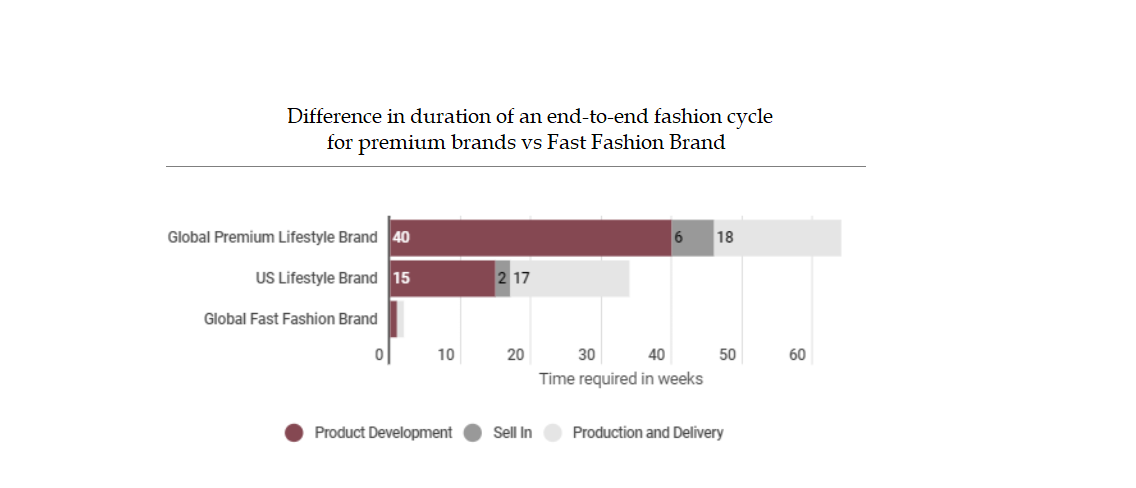FASHION
Style that's sustainable

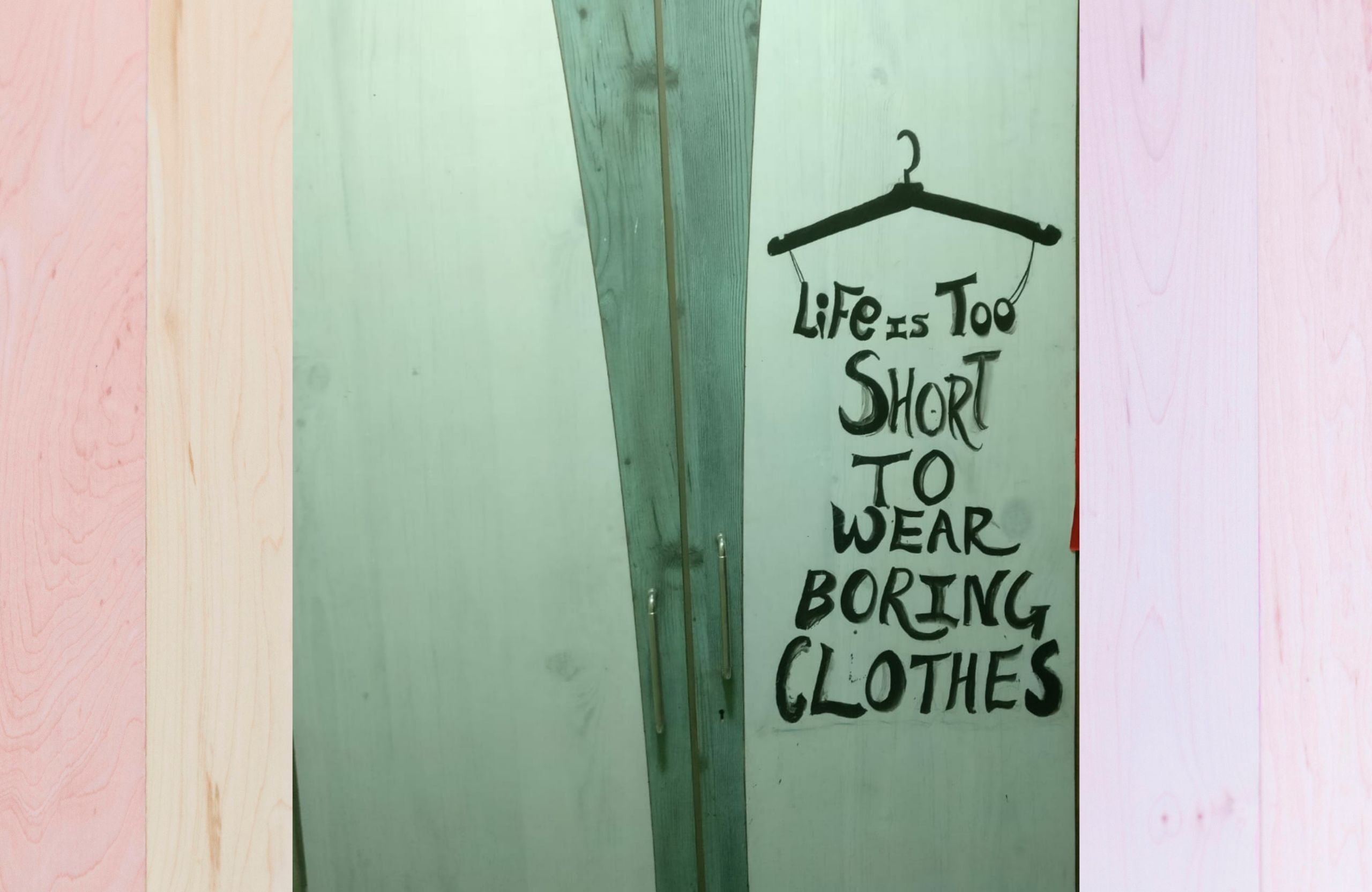
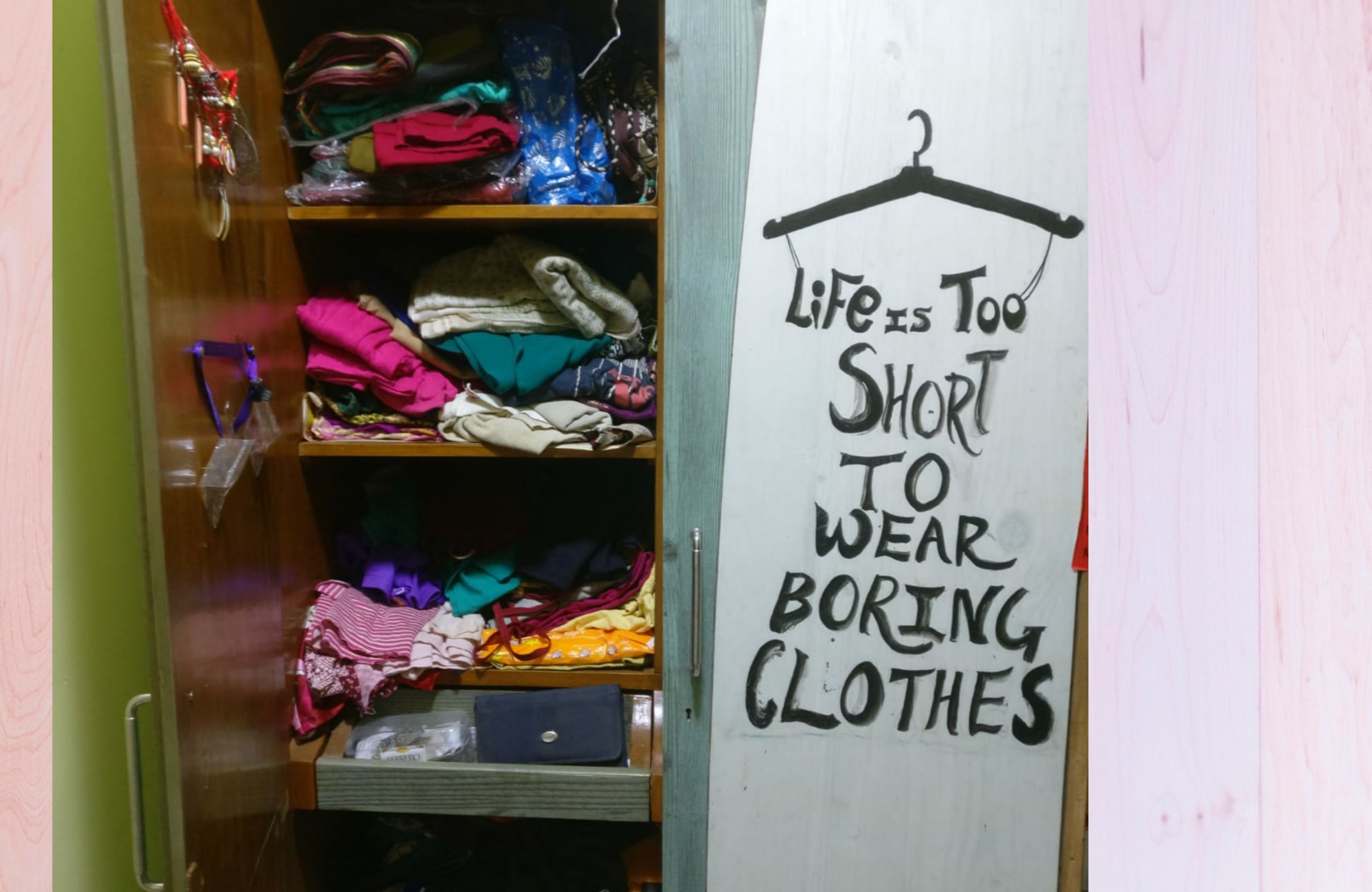
Alongside I have a picture of my wardrobe. I have made a small graffiti suggesting something I have always wanted to follow... But alas... I'm not as rich as I think I am :D So to get as close to it as possible I never leaving any opportunity of a sale , BOGO or clearance drives !
Last weekend, while browsing online I read an offer on H&M's website "For every bag of textiles you drop off, you’ll receive a discount card for 15% off your next in-store purchase." and I was the happiest living person on this planet!
I quickly decided to replace all my old, unused clothes with new latest fashion. That's when I realized, most of my clothes are weren't old, but I hardly wore them after buying it.
Now my wardrobe looks like this, which is pretty packed with new stuff which I may not use for long , but got just for $50.
And this fact intrigued me to find more about these brands and their business model. Read along to find out.
The U.S. apparel industry today is a $12 billion business and the average American family spends $1,700 on clothes annually, according to the Bureau of Labor Statistics. The dollar figures are of little significance since it accounts for just 3.5 percent of a family's expenses, on average. What is significant is whether that money is spent on need or waste. The answer is, largely, waste.
A market research firm OnePoll surveyed 2,000 women and found that each year chicks spend more than 100 hours on 30 trips to shop for clothes, 15 shoe-shopping excursions taking 40 hours, and a full 50 hours per year window shopping.
Further, these same women spend 95 hours and 84 trips shopping for food -- which one could argue is a daily need actually requiring frequent shopping. Yet this task occupies half the time of shoe, clothes and window shopping.
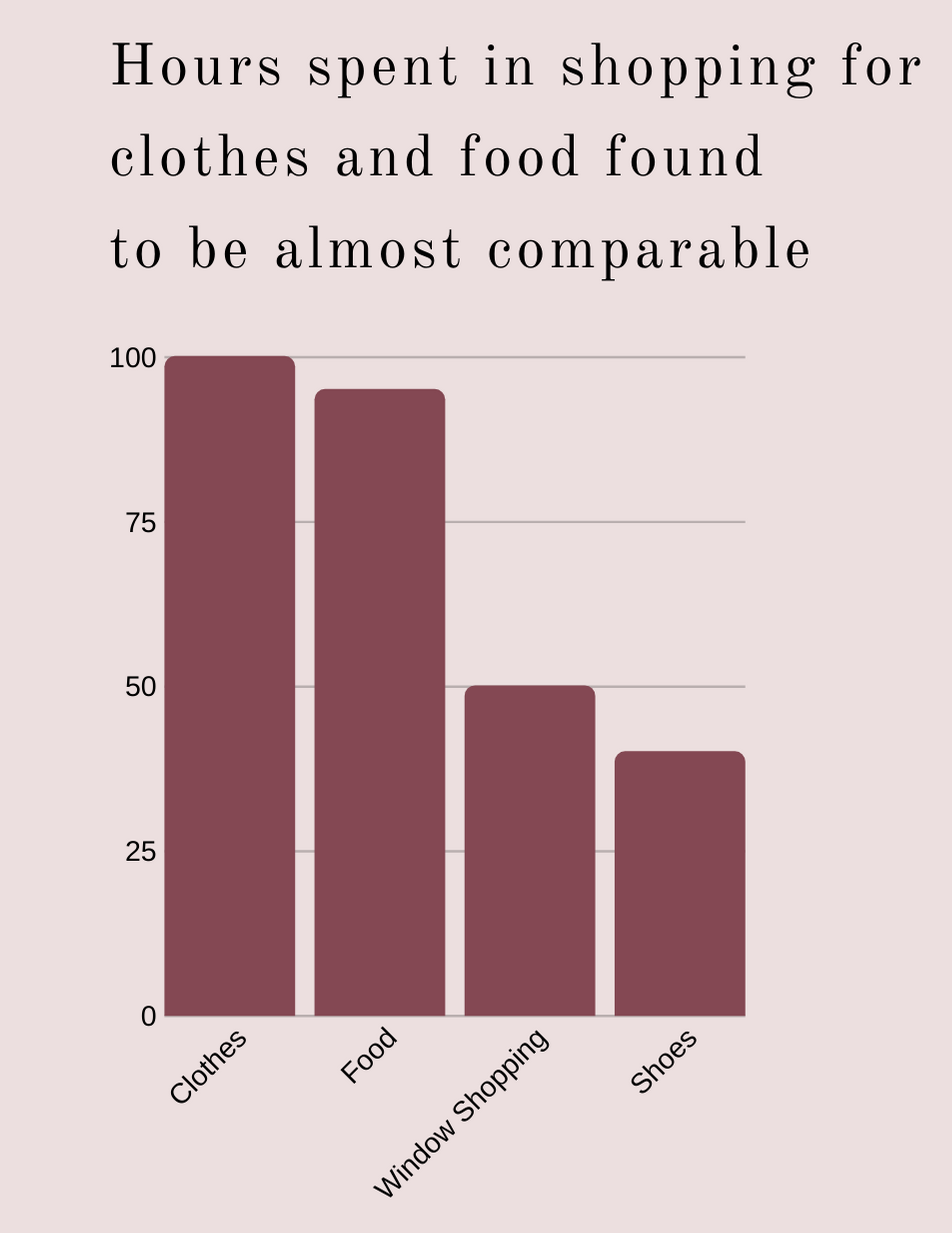
Can we reason this increase?
Have we become more rich or clothes have clothes become cheaper ? or probably we have much easier access to plenty of clothes
The answer is - ALL!
Fashion industry have had many upheavals since its start. To name a few, advent of sewing machine - industrial revolution opened up way for mass production, emergence of fashion weeks brought the concept of clothing beyond need and digitization have brought scale to designing.
But, according to researchers, the most disruptive change is caused by 'Fast Fashion'
Fast Fashion
What does it mean ?
Replicate Designs. Produce Fast. Sell Cheap.
More Formally :
" An approach to the design, creation, and marketing of clothing fashions that emphasizes making fashion trends quickly and cheaply available to consumers. " - Merriam Webster

'Fast Fashion' is a term coined to highlight the basic difference between traditional fashion and its new millennial twin - Fast Fashion. As seen from the definition by Merriam Webstar above, it is a new business model which focuses on getting the runway styles to midway consumers as quickly as possible.
The thinking was that consumers, especially millennials, have become accustomed to instant gratification and are therefore much less willing to wait several months to own the latest runway styles. The so-called “fast fashion” companies—the likes of Forever 21, H&M, Inditex (parent company of Zara) and Primark— are producing replicas of fresh-off-the-runway items and selling them in stores in a matter of weeks.
Below is an example of a knock-off by Zara in 2016
How do they work ?
The secret sauce for being increasingly popular lies in the time delay
The usual fashion cycle consists of three phases: planning, design, and product development; sell-in; and production and delivery. The length of each phase varies widely by company. A phase can be as short as 12 weeks or as long as 30. But, if you are a Fast Fashion brand, you can't wait for so long !
To elaborate, according to a lead designer from Zara, Zara has 52 seasons a year ! Which essentially means, new fashion trend each weak.
Below is a graph that shows how Fast Fashion companies spend their time before launching a new 'trend'. As expected, the fast fashion brand has least time in Product Development (since they primarily coin on knock-offs) followed by creating a mass production of the design and a strong supply chain network which reduces the total time by 20 weeks as compared to the premium brands.
What is going wrong here?
Consumption.
In 2014, the average North American bought 16kg (35lbs) of new clothes. According to Greenpeace, that’s equivalent to 64 T-shirts or 16 pairs of jeans. Who on earth needs 16 kilos of new clothes every year?? The global average in the same year was 5kg per person. By 2030, we expect the global average to increase to about 11-16kg/person/year. We simply don’t need that many clothes.
Production.
The fast fashion industry produces ~1 billion garments annually.
Profits are around 3 trillion dollars per year. What impact does this large amount of production have on our environment? Production at this scale is pushing our natural systems to the absolute limit.
An estimate by McKinsey states that making 1 kilogram of fabric generates an average of 23 kilograms of greenhouse gases. The fast fashion industry emits 1.2 billion tons of CO2 equivalent per year. This is about 5% of global emissions. That’s more than the emissions created by air travel and international shipping.
Disposal.
The fashion industry produced 92 million tons of waste in 2015 alone.
Textiles are one of the fastest growing sources of waste globally. As our consumption increases our environmental impact in the form of waste also increases.
85% of our old clothes end up in a landfill.
In North America, that equates to about 25 billion tons per year of textile waste. We use petrochemical-based materials, i.e. plastic polymers to produce a large portion of this waste. Just like other plastic materials, they do not biodegrade. Instead, they slowing break down into smaller and smaller pieces called microfibres.
The dyes and chemicals used to make these clothes also leach into the earth. This often causes contamination of water and soil.
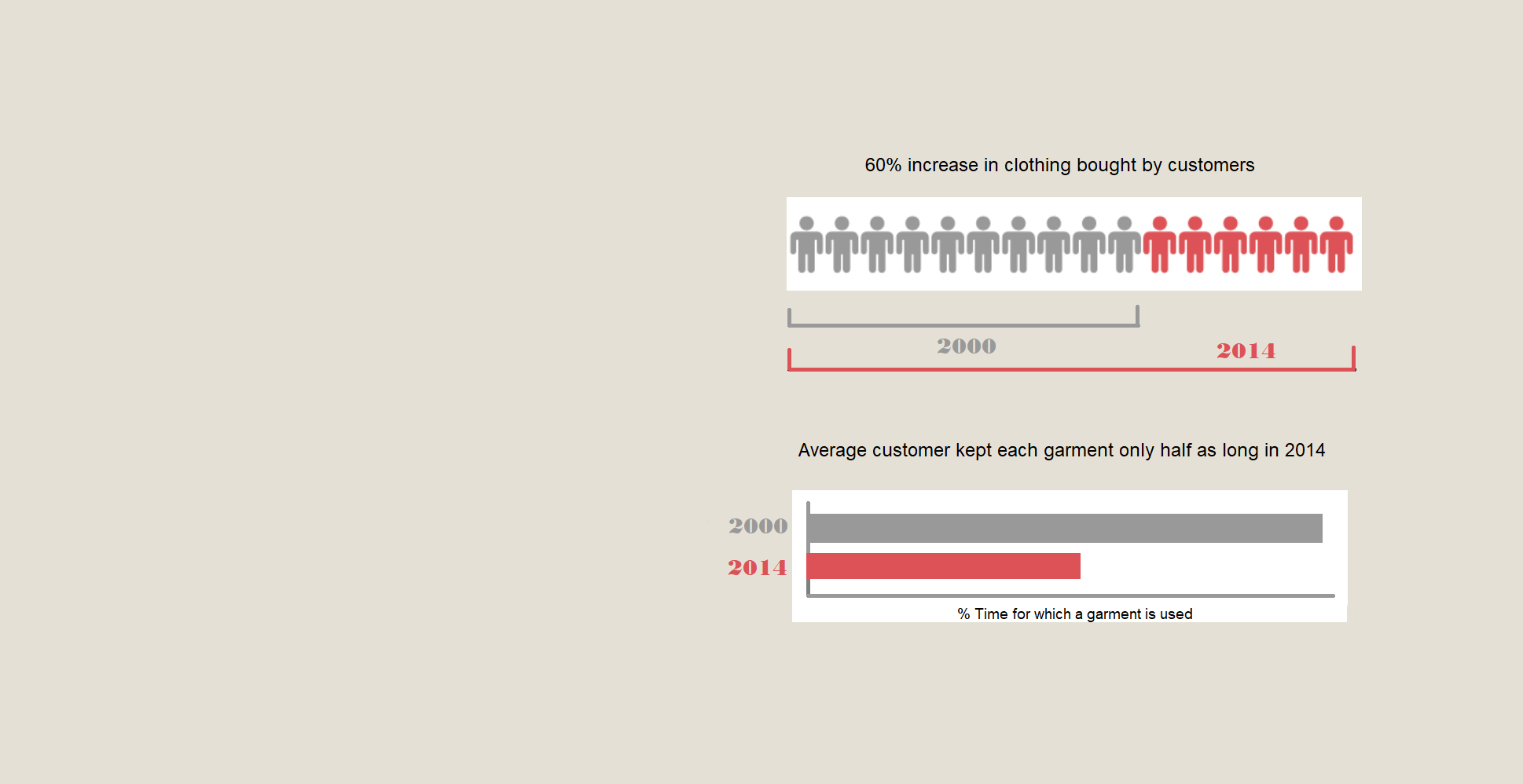


The fashion industry produced
92 million tons of waste in 2015 alone.
And that new tee shirt you bought, is part of this $92 mn.
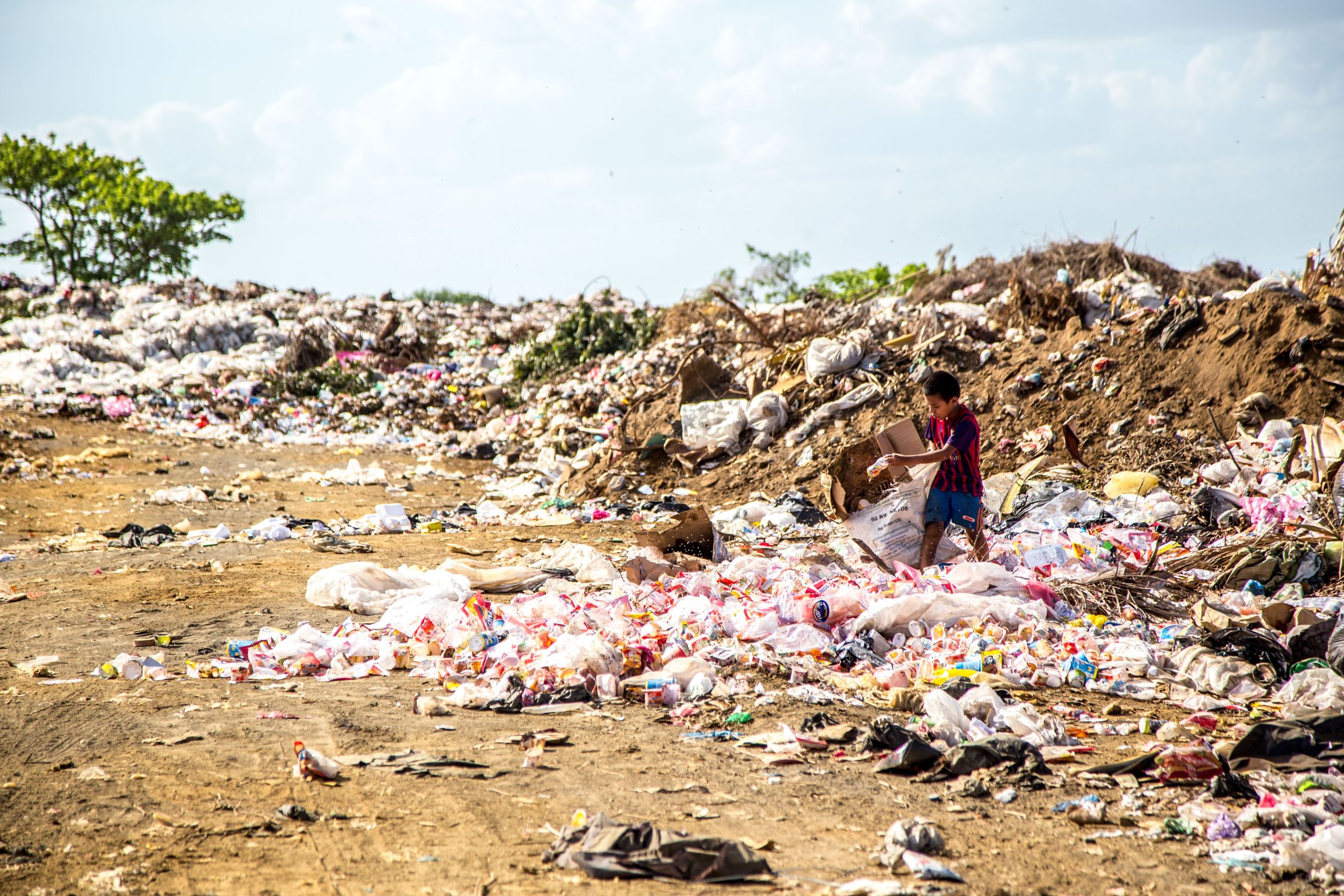
What can we do about it ?
"Buy Less. Choose Well. Make it Last."
- Vivienne Westwood
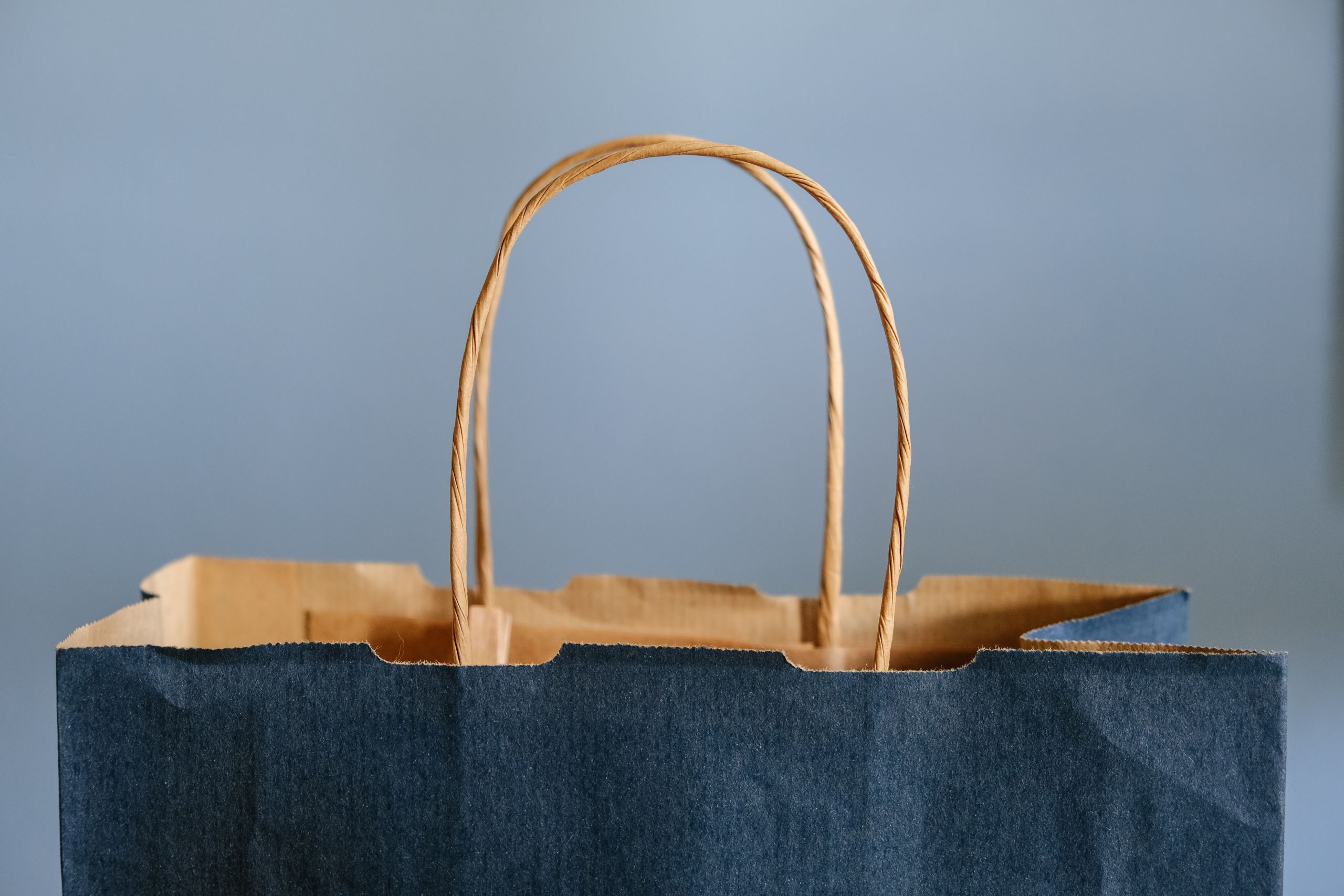
Buy less!!
The biggest issue with fast fashion is the scale and speed of production at which the industry operates. High demand drives this industry, in turn creating large environmental issues. We are simply producing, consuming, and disposing way too many clothes! This is pushing natural systems and resources used by the industry to the absolute limit. We cannot have continuous growth on a planet with finite resources! It’s just not going to work! Fast fashion plays on our consumptive culture. Advertisements make use believe we need more stuff. We buy clothes not out of necessity or function but simply based on styles and trends. These cheap, disposable clothes are causing serious harm to our environment and the people making them. If the consumer demand was lower, clothing retailers wouldn’t be pumping out excessive amounts of cheap clothes. So, one of the easiest sustainable clothing solutions to fast fashion is to simply buy less. It’s better for your wallet and the planet.
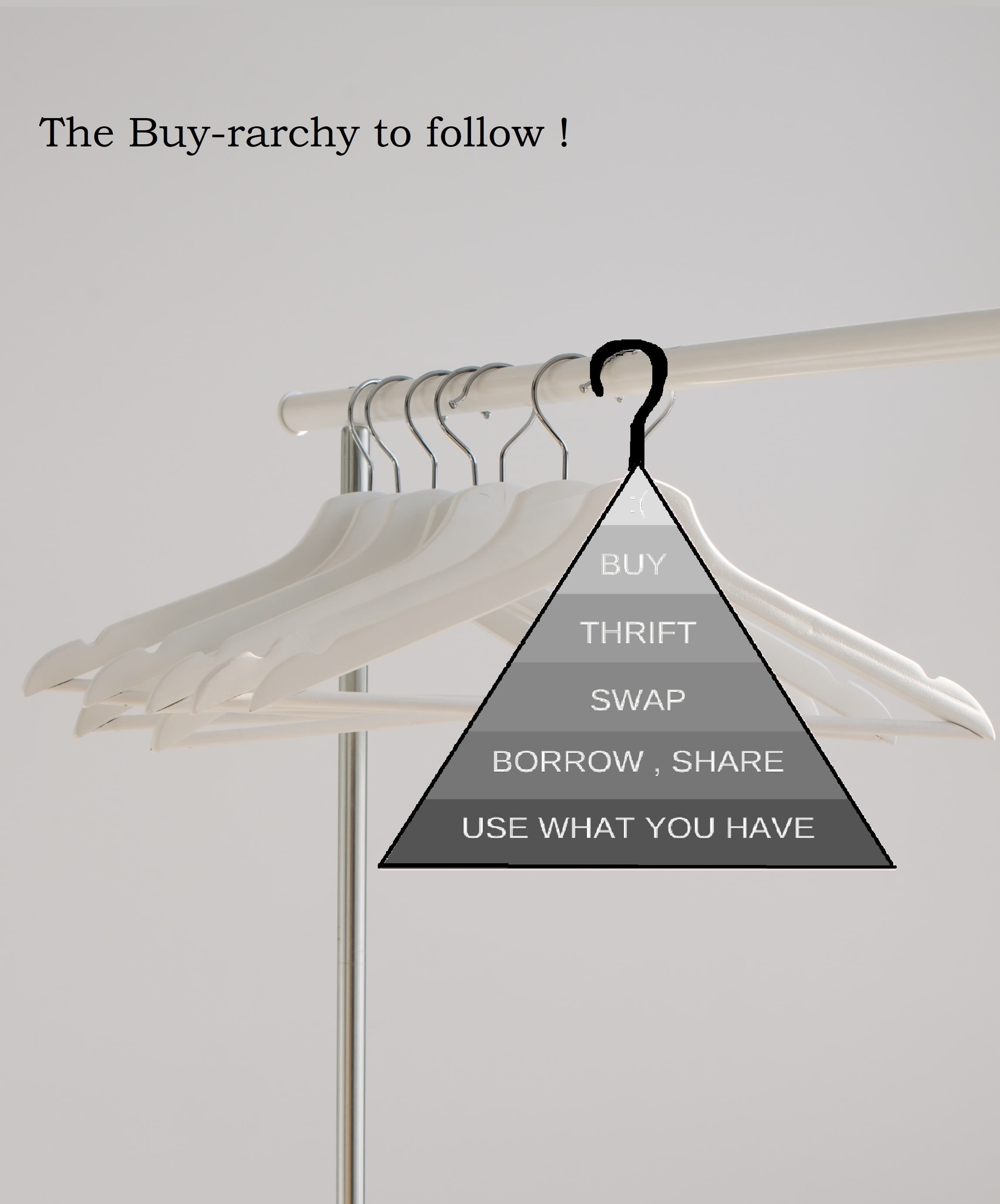
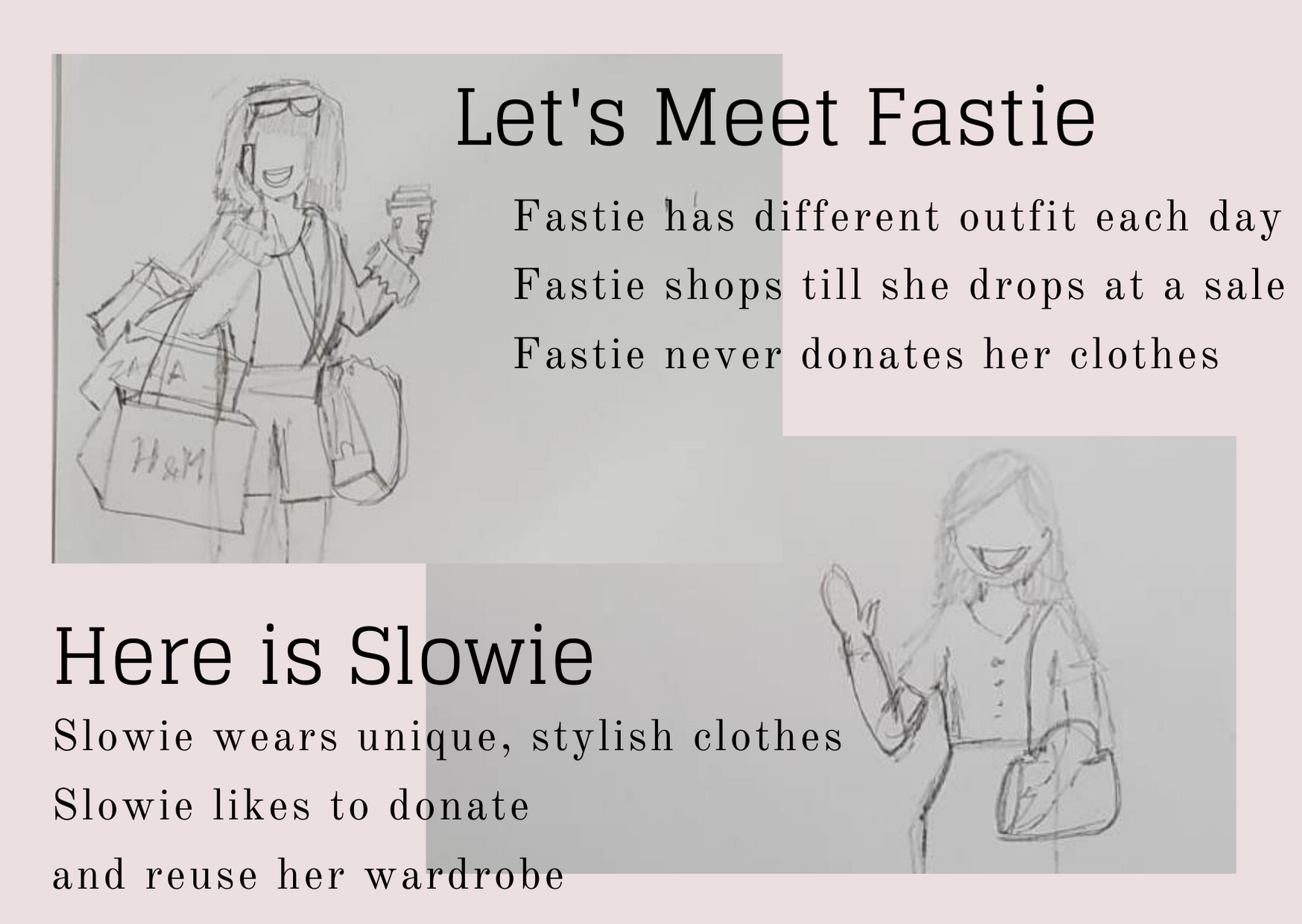
Choose Well
Instead of allowing advertisements to persuade you, find your own personal style and buy clothes based on this. Make sure the clothes you buy are good quality, functional, and versatile. Good quality clothing will allow you to buy less often. Functional clothing will allow you to be comfortable in the clothing that you own. And versatility will allow you to use the same item of clothing for many different looks and purposes. You’ll end up with clothes that you like a whole lot more and that will last a lot longer.
BE LIKE SLOWIE!
Make it last
Doubling the life of clothing from one year to two years will reduce emissions over the year by 24% (Greenpeace).
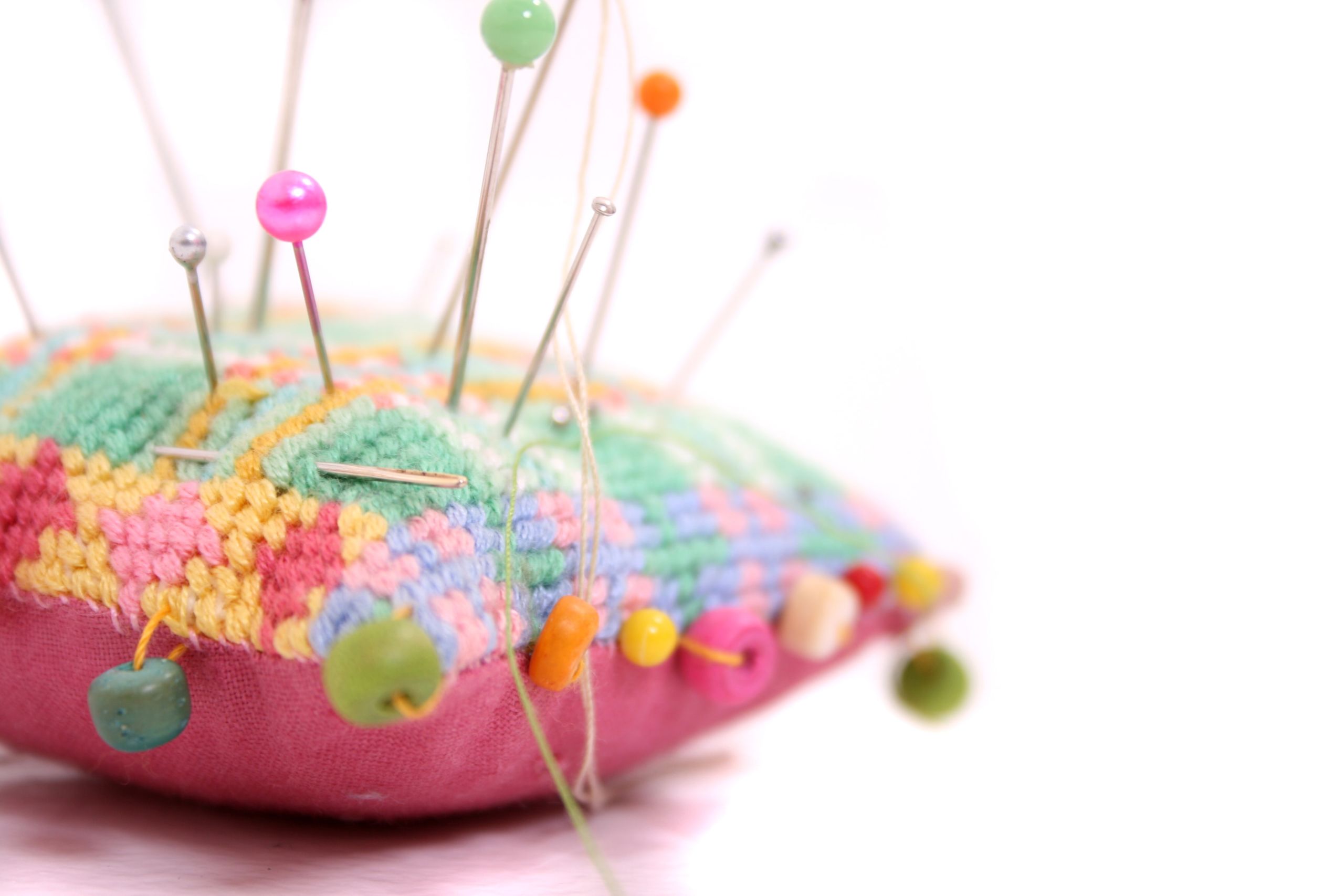
Photo by Lisa Woakes on Unsplash
Photo by Lisa Woakes on Unsplash
Look after your clothes, repair them, restyle, and reinvent them. Today, we live in a culture where our material possessions are disposable. Many of the clothes we discard are mendable. Why not use the old sewing machine or needle and thread to mend the hole in your sweater?
Sustainable clothing is clothing that lasts.
After this study, I have corrected my wardrobe to -
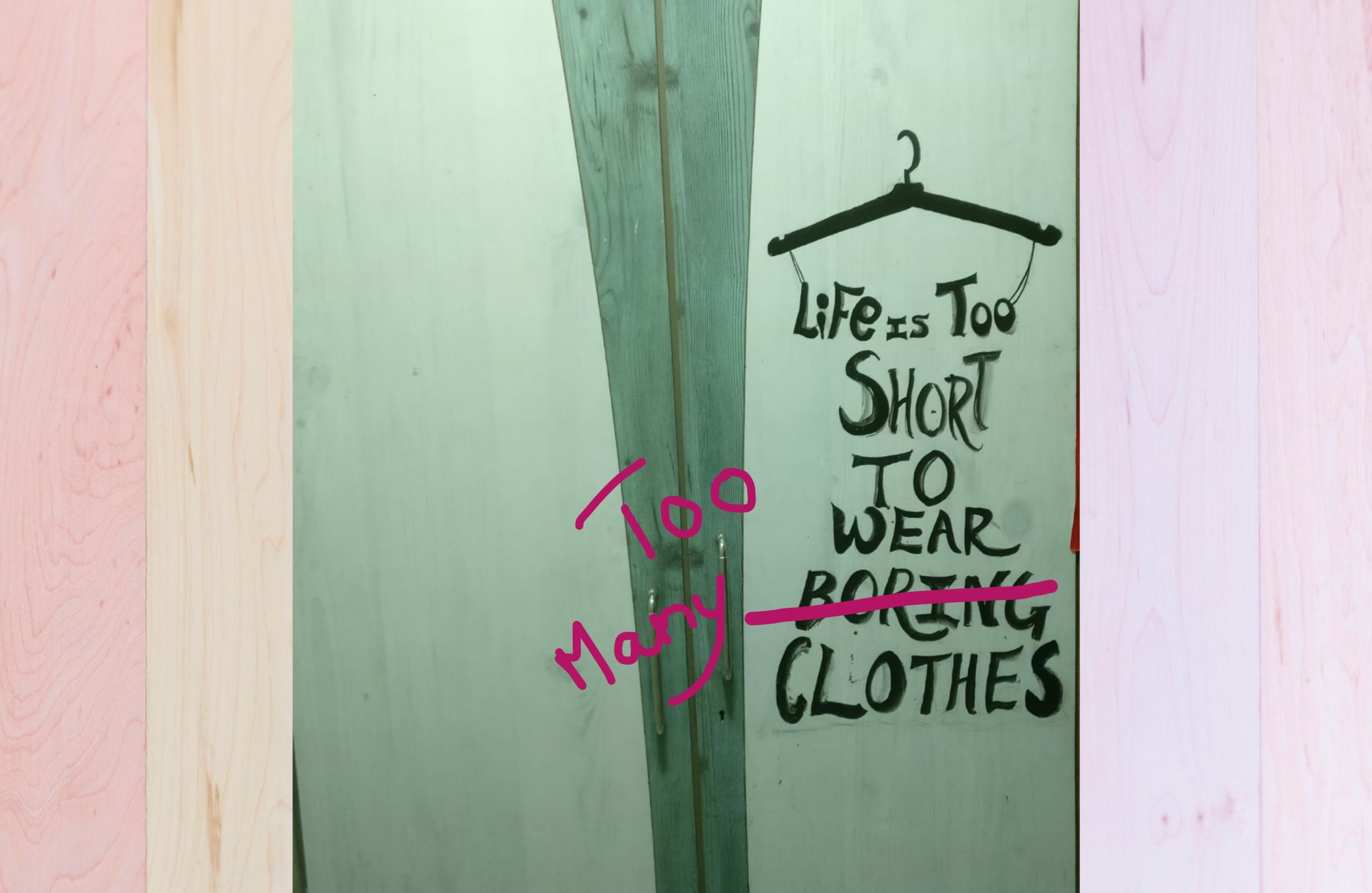
What will you do?
Few Further reads :
Fast to Slow Fashion: Sustainable Clothing https://7billionfor7seas.com/sustainable-clothing/
A guide to slow but sustainable fashion https://sloactive.com/slow-fashion-guide/
How can we reduce our Fashion Environmental Impact? https://www.sustainyourstyle.org/en/reducing-our-impact

